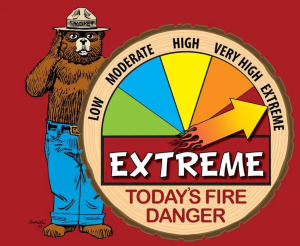Incident Information
Staying informed is crucial, as fire conditions can shift quickly due to weather and other influences. Regularly check current fire danger status, alerts, fire restrictions, and wildfire information to access the most accurate and timely fire information.
To report a wildland fire call 406-829-7070.
Incident Information
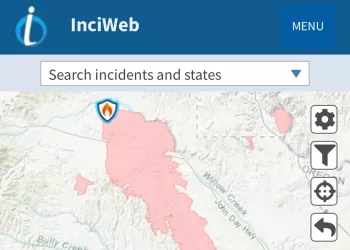
Stay informed about wildfires, prescribed fires, and other natural disasters by visiting InciWeb. Click the button below for real-time updates, safety information, and resources to help you prepare and respond.
Fire Restrictions

The purpose of fire restrictions is to reduce the risk of human-caused fires during unusually high fire danger and/or burning conditions. Check current fire restrictions before heading out to enjoy the Forest.
Lolo Fire Information
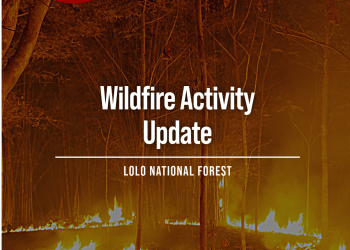
Forest-specific fire information is regularly posted on the Lolo National Forest Facebook page during fire season. For local fire updates, follow the Lolo Facebook page.
Alerts & Closures

Our Alerts page displays important regional and forest-specific information. Check this page regularly to view any closures or special orders related to fire danger, in addition to long-term forest orders.
Evacuation Information

Visit MT Fire Information Evacuation page to see a full list of County Evacuation Response Information.
Fire Danger
The National Fire Danger Rating System (NFDRS) is a system that allows fire managers to estimate today's or tomorrow's fire danger for a given area. It links an organization's readiness level (or pre-planned fire suppression actions) to the potential fire problems of the day.
Knowledge of these levels can help forest visitors make decisions about whether or not to have a campfire or ride their OHV in a grassy area. Homeowners may choose to postpone burning a debris pile if they are aware of the fire danger level for that day. Contractors working in the forest may consider extra precautions when using equipment that might produce sparks. In some cases, the National Forest may even restrict certain activities based on the fire danger levels.
We use five different color-coded levels to help the public understand fire potential. The purpose of this is for visitors to understand the current conditions and help mitigate their actions to prevent human-caused wildfires. Shown below is a brief explanation of the different fire danger levels, using adjectives and colors based on criteria established by the National Fire Danger Rating System.
Smokey Bear sign with the five fire danger levels.
When the fire danger is "low" it means that fuels do not ignite easily from small embers, but a more intense heat source, such as lightning, may start fires in duff or dry rotten wood. Fires in open, dry grasslands may burn easily a few hours after a rain, but most wood fires will spread slowly, creeping or smoldering. Control of fires is generally easy.
Smokey Bear sign with the arrow on "Low" fire danger level.
When the fire danger is "moderate" it means that fires can start from most accidental causes, but the number of fire starts is usually pretty low. If a fire does start in an open, dry grassland, it will burn and spread quickly on windy days. Most wood fires will spread slowly to moderately. Average fire intensity will be moderate except in heavy concentrations of fuel, which may burn hot. Fires are still not likely to become serious and are often easy to control.
Smokey Bear sign with the arrow on "Moderate" fire danger level.
When the fire danger is "high", fires can start easily from most causes and small fuels (such as grasses and needles) will ignite readily. Unattended campfires and brush fires are likely to escape. Fires will spread easily, with some areas of high intensity burning on slopes or concentrated fuels. Fires can become serious and difficult to control unless they are put out while they are still small.
Smokey Bear sign with the arrow on "High" fire danger level.
When the fire danger is "very high", fires will start easily from most causes. The fires will spread rapidly and have a quick increase in intensity, right after ignition. Small fires can quickly become large fires and exhibit extreme fire intensity, such as long-distance spotting and fire whirls. These fires can be difficult to control and will often become much larger and longer-lasting fires.
Smokey Bear sign with the arrow on "Very High" fire danger level.
When the fire danger is "extreme", fires of all types start quickly and burn intensely. All fires are potentially serious and can spread very quickly with intense burning. Small fires become big fires much faster than at the "very high" level. Spot fires are probable, with long-distance spotting likely. These fires are very difficult to fight and may become very dangerous and often last for several days.
Smokey Bear sign with the arrow on "Extreme" fire danger level.
The key inputs into the NFDRS model are: fuels, weather, topography and risks.
The "Adjective Ratings" are a public information description of the relative severity of the current fire danger situation in a general area. Adjective Ratings are generally posted on signs as visitor enter public lands or at agency offices. Many people associate these signs as "Smokey Bear signs".
Additional Resources
More fire information resources below.
Missoula Interagency Dispatch

Interagency dispatch center for southwest Montana area.
National Interagency Fire Center
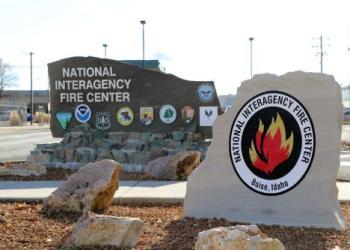
The National Interagency Fire Center (NIFC) is the nation’s support center for wildland fires and other emergency situations.
Fire and Smoke Map
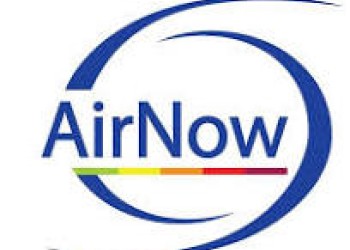
Be Smoke Ready
Take steps now to prepare for fire season. Being prepared for fire season is important for everyone's health.
Prescribed Fire & Fuels

Prescribed fire is normally implemented during the fall, winter, or spring, when conditions allow. It is one tool used to promote and maintain a resilient landscape.








